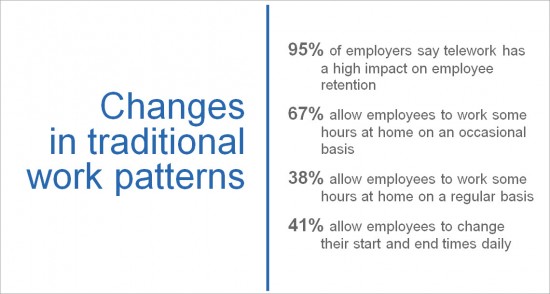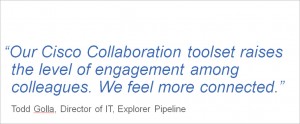































Tonight I'mheading out for a huge slice of nostalgia. I'm going to see 1980s pop group Simple Minds. No doubt there'll be much reminiscing and swaying of hands to classics like "Don't You (Forget About Me)."
This year Cisco has been celebrating its 30thbirthday. Another recent addition to the 30-something list is the movie "The Breakfast Club." This John Hughes classic became an icon of the time and helped make Simple Minds and "Don't You (Forget About Me)" world famous.
As a remote worker, I understand it could be easy to feel "forgotten" and become disillusioned with a lack of information and sporadic contact with your managers, peers, and co-workers. How do you, for example:
I'm notsuggesting that you use "The Breakfast Club" as an example. The answer is not to round-up your remote workers and hold them in forced detention over a weekend until they discover common ground and form the (perhaps unlikely) alliances they need to succeed. But howdoyou ensure individual team members are engaged and able to contribute fully to the success of your organization?
At Cisco, I'm in a fortunate position. I have access to a variety of video-enabled collaboration tools that mean I can regularly:
These tools mean I can stay informed and have close, productive relationships with my colleagues. Some I've never even met in person. Most I'll physically meet once a year -if I'm lucky.
 http://www.globalworkplaceanalytics.com/resources/costs-benefits http://www.employmentmattersblog.com/files/2014/02/2014NationalStudyOfEmployers.pdf
http://www.globalworkplaceanalytics.com/resources/costs-benefits http://www.employmentmattersblog.com/files/2014/02/2014NationalStudyOfEmployers.pdf But it's not just a nice, fluffy thing to do. Employee satisfaction and high employee turnover are serious concerns for any business. As the economy continues to grow and midsize businesses expand their workforce, the competition to attract and retain talent is fiercer than ever. Employee attitudes are changing: They are more discerning about for whom they work, where they work, and when they work. They consult sites like glassdoor.com to see what other past and present employees think about an organization before making a decision. And they expect access to the tools they need to help them succeed.
Whether for branch-office workers, teleworkers, or mobile workers - or even as a business continuity strategy (for adverse weather for example) - the good news is that the tools you need are more affordable, easily accessible, and simple to deploy, use, and manage than ever before. Tools include video-enabled mobile phones and tablets, desktop endpoints, room-based video conferencing systems, Spark rooms for team working, and WebEx for meetings. Indeed, organizations of all sizes, and the individuals / teams within them are recognizing the need for these capabilities and starting out with free versions that enable them to get up and running quickly and prove the value to their organizations.
 But just don't take my word for it. Recently, I spoke with Explorer Pipeline executives about how they are using Cisco Collaboration solutions to attract, train and engage a diverse workforce of more than 350 employees, spread along the company's 1,800+ mile-long pipeline. They are increasing employee participation and collaboration, and turning company communications into a two-way dialogue using high-definition video.
But just don't take my word for it. Recently, I spoke with Explorer Pipeline executives about how they are using Cisco Collaboration solutions to attract, train and engage a diverse workforce of more than 350 employees, spread along the company's 1,800+ mile-long pipeline. They are increasing employee participation and collaboration, and turning company communications into a two-way dialogue using high-definition video.
For more information on the key use cases for collaboration that can enhance employee engagement in your organization check out our use case tool. And don't forget to visit our midsize collaboration solutions page.
 Tags quentes :
Colaboração
Cisco Spark
telework
#contactcenter
employee engagement
midsize
Tags quentes :
Colaboração
Cisco Spark
telework
#contactcenter
employee engagement
midsize